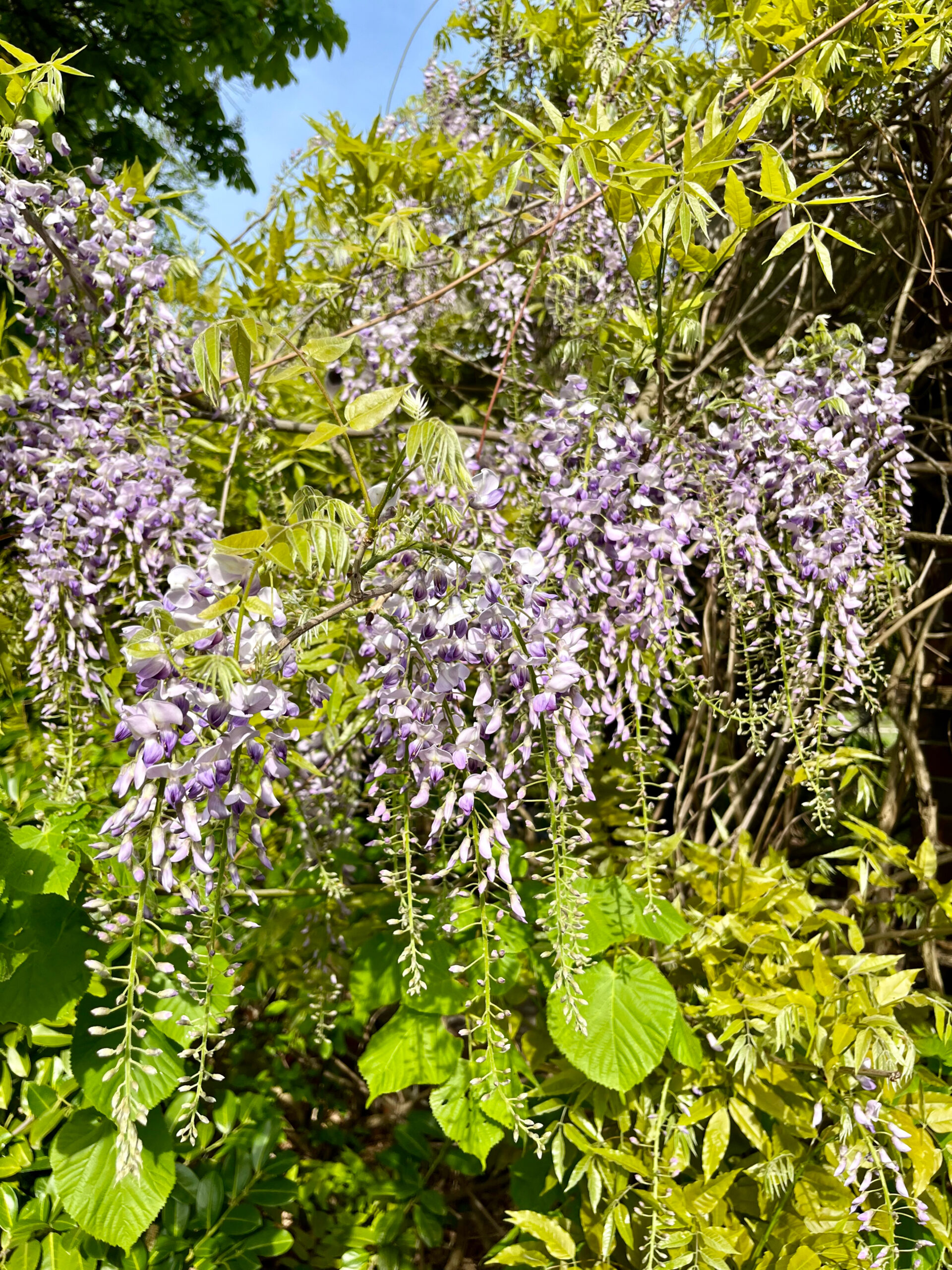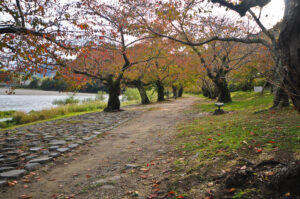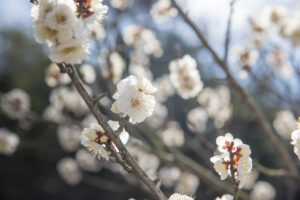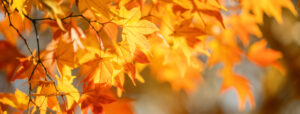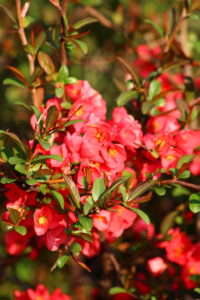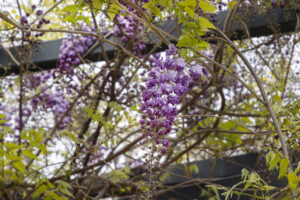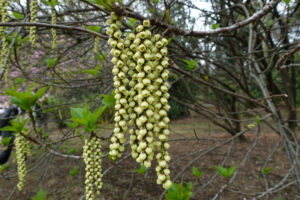Wisteria floribunda, often referred to as Japanese wisteria, is a breathtaking flowering plant admired for its cascading clusters of fragrant blooms. With a history steeped in cultural significance and a range of stunning varieties, this plant holds a prominent place in gardens and landscapes worldwide. From its enchanting beauty to its ecological contributions, Wisteria floribunda invites exploration into its many facets. This article delves into the allure, historical roots, and botanical characteristics of this remarkable plant, along with essential care tips and its role in landscape design and ecosystems.
The Allure of Wisteria Floribunda: A Floral Marvel
Wisteria floribunda is undeniably a floral marvel, captivating onlookers with its breathtaking display of violet, lavender, and white clusters that droop gracefully from its vines. The sheer volume of blooms creates a mesmerizing spectacle, often leading to gasps of admiration during its peak flowering season. As the flowers bloom, they emit a sweet, intoxicating fragrance that attracts bees and other pollinators, adding to the plant’s allure and charm.
Beyond its aesthetic beauty, Wisteria floribunda has the unique ability to evoke emotions and memories, often associated with romantic gardens and serene landscapes. This plant has a certain ethereal quality, reminiscent of springtime and renewal, making it a popular choice for wedding venues and special events. Its nodding blooms create a picturesque canopy that invites people to linger beneath, fostering a sense of tranquility and connection with nature.
Moreover, the growth habit of Wisteria floribunda adds to its appeal. With the potential to climb trellises, arbors, and pergolas, this plant can transform ordinary structures into enchanting focal points in gardens. When trained properly, the vines create a lush, green backdrop that frames the vibrant flowers, enhancing the overall visual impact.
The versatility of Wisteria floribunda also contributes to its allure. Whether used as a ground cover, a climbing vine, or a free-standing shrub, its adaptability ensures that it can fit into a variety of garden designs and styles. From Japanese zen gardens to rustic country landscapes, Wisteria floribunda finds its place, enriching the diversity of plant life.
In addition, the excitement surrounding the blooms extends beyond the garden. Homeowners and landscapers alike eagerly anticipate the arrival of spring when Wisteria floribunda bursts into life, marking the end of winter’s dreariness. Its blooms symbolize hope and new beginnings, offering a sense of continuity and renewal that resonates with many.
Ultimately, the allure of Wisteria floribunda lies not only in its striking appearance but also in the joy and inspiration it brings to those who encounter it. This floral marvel continues to enchant and inspire, making it a beloved staple in gardens across the globe.
Historical Roots: Wisteria’s Cultural Significance Unveiled
Wisteria has a rich history that dates back centuries, particularly in East Asian cultures. Revered in Japan, Wisteria floribunda is often linked to themes of grace, beauty, and transience, reflecting the Japanese philosophy of appreciating the fleeting nature of life. The plant’s blossoms have been celebrated in art, literature, and poetry, symbolizing love, longevity, and spiritual connection.
In traditional Japanese gardens, Wisteria floribunda plays a prominent role, with ornate trellises and arbors designed specifically to showcase its stunning blooms. The famous Ashikaga Flower Park in Tochigi Prefecture features an impressive collection of Wisteria, drawing visitors from around the world to witness the breathtaking spectacle of its flowering in spring.
Moreover, Wisteria floribunda has made its mark in Chinese culture, where it is often portrayed in classical paintings and poetry. In Chinese mythology, the wisteria is associated with the idea of harmony and joy, and its presence in gardens signifies prosperity and good fortune. This cultural significance adds layers to the appreciation of Wisteria floribunda, elevating it from a mere plant to a symbol of beauty and hope.
As Wisteria floribunda spread to the West, it became a favorite among gardeners and landscape designers. Its introduction to Europe in the 19th century sparked a fascination for exotic plants, leading to its incorporation into formal gardens and public parks. The plant’s ability to thrive in various climates only enhanced its popularity, as it became a symbol of elegance and refinement.
The historical roots of Wisteria floribunda are not just limited to aesthetics; they also reflect broader themes of environmental stewardship and sustainability. Many cultures have recognized the importance of plants in creating serene and harmonious spaces, and Wisteria floribunda stands as a testament to that enduring belief.
In conclusion, the cultural significance of Wisteria floribunda cannot be overstated. It serves as a bridge between nature and human emotion, reminding us of the transient beauty of life and the importance of cherishing the moments that bring us joy.
A Closer Look: Botanical Characteristics of Wisteria
Wisteria floribunda belongs to the Fabaceae family, which includes legumes and other familiar plants. This deciduous climbing vine can reach impressive heights of up to 30 feet (9 meters) when left to its own devices, with a spread that can extend to 10 feet (3 meters). Its vigorous growth habit makes it an excellent choice for creating lush, green cover on trellises or fences, providing both beauty and privacy.
The leaves of Wisteria floribunda are compound, typically consisting of 7 to 13 leaflets that are elongated and oval-shaped, giving the plant a lush, tropical appearance during the growing season. These leaves are a deep green, contrasting beautifully with the purple or white flowers that emerge in spring. During the fall, the foliage takes on a golden hue, providing seasonal interest even after the blooms have faded.
The flowers of Wisteria floribunda are another standout feature. Each raceme can be up to 20 inches (50 centimeters) long and contains numerous fragrant flowers that bloom in clusters. The individual flowers have a distinctive shape, with two upper petals and a lower petal that resembles a landing pad for pollinators. The color palette varies, ranging from deep purples to soft whites, adding a vibrant splash to any garden.
The plant’s root system is robust and extensive, which contributes to its stability as a climbing vine. Wisteria floribunda prefers well-drained soil and can tolerate a range of soil types, making it relatively easy to grow in various environments. However, it is essential to provide adequate space for the roots to spread, as this will ensure vigorous growth and abundant blooms.
Wisteria floribunda is a perennial plant, meaning it will come back year after year, providing continuous enjoyment for gardeners. Its ability to thrive in a variety of climates, from temperate to subtropical, further enhances its appeal as a landscaping choice. Additionally, it exhibits some drought resistance once established, although regular watering during dry spells will promote optimal growth.
Overall, the botanical characteristics of Wisteria floribunda make it a fascinating plant to study and cultivate. Its impressive growth, stunning flowers, and adaptability to different environments contribute to its status as a cherished element in gardens worldwide.
Ideal Growing Conditions for Flourishing Wisteria Floribunda
To cultivate thriving Wisteria floribunda, understanding its ideal growing conditions is crucial. This plant flourishes in full sun, requiring at least six hours of direct sunlight each day to produce the abundant blooms for which it is famous. While it can tolerate partial shade, reduced sunlight will often result in fewer flowers and a more leggy appearance.
Soil quality is another essential factor in the successful growth of Wisteria floribunda. It prefers well-drained, loamy soil rich in organic matter. Adding compost can enhance soil fertility and air circulation, promoting healthy root development. While Wisteria floribunda is adaptable to various soil types, it is essential to avoid overly compacted or waterlogged soils that can lead to root rot.
In terms of temperature, Wisteria floribunda thrives in USDA hardiness zones 4 to 9. It can withstand cold winters, but protection from extreme frost is beneficial during its early years of establishment. A warm environment during the growing season encourages vigorous growth, allowing the plant to reach its full potential.
Watering is an integral part of care for Wisteria floribunda, especially during the first few years after planting. While the plant is drought-resistant once established, consistent moisture during its initial growth phase promotes strong root systems and vibrant blooms. Regular watering during dry spells is also important, as it ensures that the plant remains healthy and hydrated.
Fertilization can enhance the growth of Wisteria floribunda. A balanced, slow-release fertilizer can be applied in early spring before new growth begins. This will provide the necessary nutrients for robust growth and abundant flowering. However, it’s vital not to over-fertilize, as too much nitrogen can result in excessive foliage growth at the expense of blooms.
Lastly, proper support is crucial for Wisteria floribunda to reach its full potential as a climbing vine. Installing sturdy trellises, arbors, or fences will allow the plant to climb and spread, creating the impressive cascading effect that gardeners adore. With the right conditions, Wisteria floribunda can thrive, creating a stunning focal point in any garden.
Seasonal Splendor: When to Expect Wisteria Blooms
Wisteria floribunda offers a spectacular display of blooms that transforms gardens into picturesque settings each spring. The flowering season typically begins in late April and can last until early June, depending on the climate and specific growing conditions. This seasonal splendor is eagerly anticipated by gardeners and nature lovers alike, marking the arrival of warmer weather and the vibrant life it brings.
The blooming process of Wisteria floribunda is a gradual unfolding, starting with the emergence of buds that begin to swell as temperatures rise. As the days grow longer and warmer, these buds burst open into lavish clusters of flowers, attracting bees, butterflies, and other pollinators. The sight and scent of the cascading blooms create an enchanting atmosphere, inviting people to gather and appreciate the beauty of nature.
The timing of the blooms can vary based on location and environmental factors. In milder climates, Wisteria floribunda may bloom earlier, while in cooler regions, the flowering may be delayed. Gardeners can typically expect to see the first signs of blooming in late April, with peak flowering occurring in May when the display is most vibrant.
In addition to its beauty, the blooming period of Wisteria floribunda signals a time of renewal and growth in nature. As the flowers fade, they produce seed pods that linger into late summer, adding an interesting visual element to the landscape. The green foliage remains lush through the growing season, providing a backdrop for the plant’s structural beauty.
The seasonal display of Wisteria floribunda not only captivates the senses but also plays a vital role in the ecosystem. Its early blooms provide a crucial food source for pollinators, including honeybees and butterflies, which are essential for the health of the environment. This interconnectedness highlights the importance of Wisteria floribunda’s seasonal cycles beyond its ornamental value.
Ultimately, the seasonal splendor of Wisteria floribunda is a celebration of nature’s beauty and resilience. As gardens awaken from winter’s slumber, this stunning plant plays a starring role in the unfolding tapestry of spring, inviting all to partake in the joy of blooming flowers.
The Art of Pruning: Maintaining Healthy Wisteria Growth
Pruning is a crucial aspect of maintaining the health and beauty of Wisteria floribunda. Proper pruning not only encourages vigorous growth and abundant blooms but also ensures that the plant remains manageable and aesthetically pleasing. The best time to prune Wisteria floribunda is during its dormant season in late winter to early spring, just before new growth begins.
When pruning, the primary goal is to remove dead or weak branches, as well as to shape the plant to encourage a balanced structure. For young plants, initial pruning should focus on establishing a strong framework by selecting a few main stems to support future growth. These should be trained to grow vertically, ensuring that the plant has a solid base from which to flourish.
For established plants, pruning should be more aggressive to maintain size and promote flowering. Gardeners should cut back long, leggy growth, making cuts just above a healthy bud to encourage new shoots. Removing excess foliage allows sunlight to reach the inner parts of the plant, which promotes better air circulation and prevents the risk of fungal diseases.
In addition to shaping the plant, regular pruning can also help control the overall size of Wisteria floribunda. This is particularly important in urban gardens or smaller spaces where plants may need to be kept in check. By routinely trimming back new growth to a manageable size, gardeners can enjoy the beauty of Wisteria without allowing it to become overpowering.
It is essential to avoid over-pruning, which can lead to reduced blooming and stress on the plant. A light hand is preferred; pruning should remove no more than one-third of the plant’s overall growth in a single season. This approach allows the plant to maintain its vigor while still encouraging new blooms.
Finally, gardeners should always make clean cuts using sharp, sterilized pruning tools to minimize damage to the plant and reduce the risk of disease. With careful and thoughtful pruning, Wisteria floribunda can thrive, producing a stunning display of blooms year after year.
Wisteria in Landscape Design: Enhancing Outdoor Spaces
Wisteria floribunda is a versatile and stunning addition to landscape design, capable of enhancing outdoor spaces in various ways. Its climbing nature allows it to integrate beautifully into vertical structures, transforming ordinary fences and trellises into breathtaking displays of cascading flowers. This ability to climb and drape creates a sense of intimacy and enclosure, making outdoor spaces feel more inviting and magical.
In garden design, Wisteria floribunda is often used to create focal points, as its dramatic blooms draw the eye and capture attention. Gardeners can use it to frame entrances, cover arbors, or drape over pergolas, adding dimension and depth to the landscape. The interplay of light and shadow created by the cascading flowers adds a dynamic element to outdoor spaces, encouraging exploration and relaxation.
Moreover, Wisteria floribunda can be paired with a variety of companion plants to create stunning color contrasts and visual interest. For example, planting it alongside evergreens can enhance its seasonal beauty, while pairing it with flowering shrubs can create a vibrant tapestry of blooms throughout the year. This adaptability allows gardeners to design cohesive and harmonious outdoor spaces that reflect their personal style.
In addition to its aesthetic appeal, Wisteria floribunda offers functional benefits as well. Its dense foliage provides shade and shelter, making outdoor areas more comfortable during hot summer months. This natural cooling effect can reduce the need for artificial shading structures, creating a sustainable approach to landscape design.
However, it is essential to consider the vigorous growth of Wisteria floribunda when incorporating it into landscape design. Careful planning and support structures are necessary to manage its growth effectively. Proper placement and regular maintenance will ensure that Wisteria enhances the landscape without overwhelming other plants or structures.
Ultimately, Wisteria floribunda is a remarkable choice for landscape design, offering both beauty and functionality. Its ability to transform outdoor spaces into enchanting retreats makes it a beloved plant among gardeners and landscape architects alike.
Wildlife and Wisteria: The Role of Wisteria in Ecosystems
Wisteria floribunda is more than just a beautiful flowering vine; it plays a vital role in local ecosystems by providing food and habitat for a variety of wildlife. During its blooming season, the plant’s fragrant flowers attract a range of pollinators, including bees, butterflies, and hummingbirds. These creatures rely on Wisteria for nectar, making it an essential component of their foraging habitats.
The relationship between Wisteria floribunda and its pollinators underscores the importance of biodiversity in ecosystems. The presence of diverse plant species, such as Wisteria, supports a healthy population of pollinators, which, in turn, contributes to the reproduction of many flowering plants. This interconnectedness highlights the role of Wisteria as a keystone species in maintaining ecological balance.
In addition to providing nectar for pollinators, Wisteria floribunda’s dense foliage offers shelter and nesting opportunities for various bird species. Birds find refuge among the leaves, using the plant as a safe haven from predators. The plant can also serve as a perch for birds, allowing them to survey their surroundings and find food.
Moreover, Wisteria floribunda produces seed pods after flowering, which can provide food for small mammals and birds during the late summer and fall months. While the seeds are not a primary food source, they contribute to the overall diversity of available food within the ecosystem, supporting wildlife throughout the seasons.
It is essential to consider the ecological impact when cultivating Wisteria floribunda. Providing a habitat for wildlife is a rewarding aspect of gardening, and planting native species alongside Wisteria can further enhance its ecological benefits. Creating a diverse garden ecosystem encourages beneficial insects and pollinators, fostering a thriving environment for all living creatures.
In conclusion, Wisteria floribunda plays a significant role in ecosystems by providing food, shelter, and habitat for various wildlife species. Its presence in gardens not only enhances beauty but also contributes to the health and sustainability of local ecosystems, making it a favorite among environmentally conscious gardeners.
Common Pests and Diseases: Protecting Your Wisteria
While Wisteria floribunda is generally hardy and resilient, it is still susceptible to certain pests and diseases that can affect its health and blooms. Recognizing and addressing these issues promptly is essential for maintaining the vitality of this stunning plant.
One of the most common pests that target Wisteria is the aphid. These small, sap-sucking insects can weaken the plant by extracting nutrients from the leaves. Infestations may lead to curled or yellowing leaves, and the honeydew they produce can attract sooty mold, further damaging the plant. To control aphid populations, gardeners can introduce beneficial insects, such as ladybugs, or apply insecticidal soap as a targeted treatment.
Another potential threat to Wisteria floribunda is the spider mite. These tiny arachnids thrive in hot and dry conditions, often leading to stippled leaves and webbing on affected plants. Increasing humidity and providing adequate water can help deter spider mites, while insecticidal soap or neem oil can be effective treatments if infestations occur.
Fungal diseases can also pose a challenge to Wisteria floribunda. Powdery mildew is a common issue, characterized by a white, powdery coating on leaves. This fungal infection thrives in humid conditions and can be exacerbated by poor air circulation. To prevent powdery mildew, ensure proper spacing between plants for adequate airflow and avoid overhead watering. If the disease occurs, fungicides may be necessary for treatment.
Root rot is another concern that can arise, particularly if Wisteria is planted in poorly drained soil. This condition can lead to wilting and yellowing leaves and ultimately result in plant decline. To prevent root rot, it’s crucial to plant Wisteria in well-drained soil and avoid overwatering. If root rot is suspected, replanting in fresh soil may be necessary.
Regular monitoring is essential for early detection of pests and diseases. Gardeners should inspect Wisteria floribunda frequently for any signs of distress and address issues promptly to prevent further damage. Maintaining healthy growing conditions, such as proper watering and fertilization, can also help bolster the plant’s defenses against pests and diseases.
In conclusion, while Wisteria floribunda is a robust and resilient plant, it is not immune to pests and diseases. By staying vigilant and implementing preventative measures, gardeners can protect their Wisteria and enjoy its stunning beauty for years to come.
